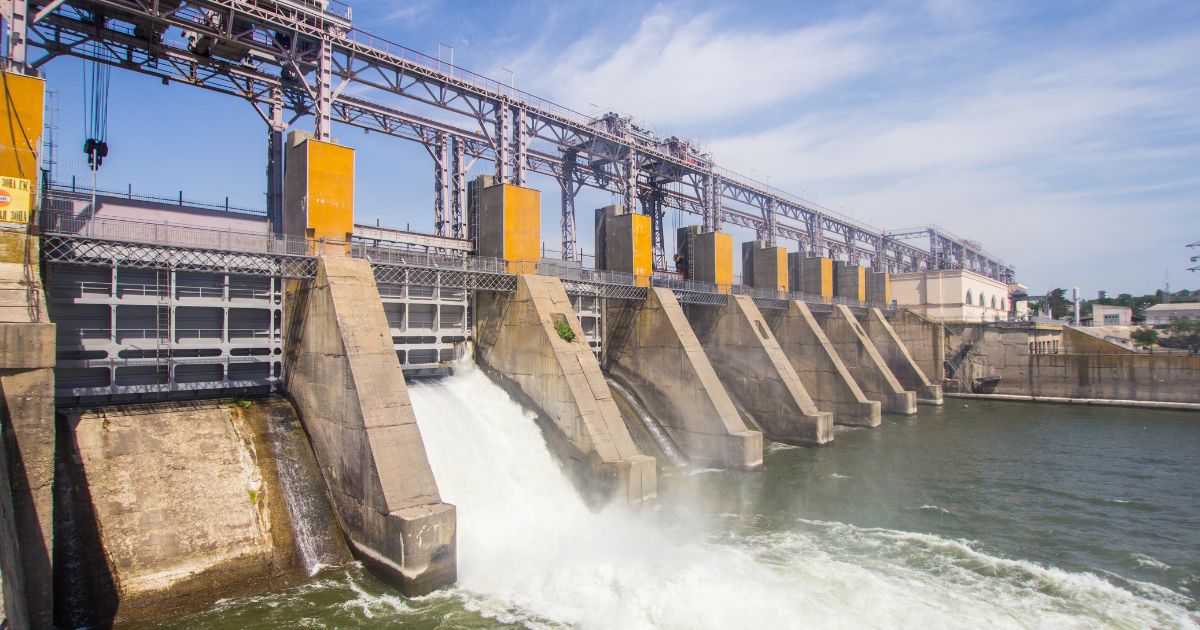- Who We Are
- What We Do
- Success Stories
- Careers
- News & Events
- Contact us

Through the spinning of turbines, the kinetic energy of falling water is converted into hydroelectric energy. Generators transform mechanical energy into electrical energy for the general population’s use.
Water in dams is the most widely used hydroelectric source, where water is released from reservoirs to drive the turbines. Energy can also be produced by using the tide or a river flowing naturally.
The sections below will let you explore the benefits and drawbacks of hydroelectric power.
What Benefits Does Hydroelectric Energy Offer?
Hydroelectricity has the undeniable advantage of assisting in the reduction of people’s reliance on fossil fuels, hence reducing greenhouse gas emissions globally and ultimately assisting in the global transition to 100 percent sustainable energy.
Hydroelectric power is naturally a clean and renewable type of energy because it depends on water, a natural resource.
As hydroelectric energy production is heavily dependent on the water cycle, regions with higher rainfall and precipitation—more common in developing nations like China, South America, and Africa—also have higher hydropower generation.
Hydropower can store a lot of water through its dam, effectively forming a water bank from which people can draw when necessary. Because of this, it is less affected by the seasons and weather in comparison to other renewable energy sources like wind or solar electricity.
The production of hydroelectric power also claims a small carbon footprint. The Intergovernmental Panel on Climate Change reveals that the natural emissions of freshwater reservoirs and the materials used to build dams give hydropower a life-cycle greenhouse gas emission intensity of 24 gCO2-eq/kWh.
Gas has a median value of 490 gCO2-eq/kWh in contrast.
As demonstrated by the “South to South Investment,” a growing phenomenon where developing nations promote the technological and financial transfer of hydropower amongst each other, hydropower projects also increase economic investments in emerging nations.
The trade-in hydropower-related machinery and components expanded from less than 10 percent of total global trade in 2004 to around 50 percent in 2012.
What Are Hydroelectric Energy’s Drawbacks?
Hydropower has limitations despite being the largest renewable source of electricity. The most important one is the harm it causes to the ecosystem and surroundings.
Most hydroelectric power plants call for building a dam, which would cause the habitats in the area to be destroyed and fragmented. Due to their physical size, most hydroelectric projects have the potential to cause extensive flooding inside a river valley.
Some locations are seeing less precipitation, while others are anticipating much more rainfall and harsh weather conditions as the consequences of climate change become more irregular. The ability of power plants to produce electricity and power is affected by changing or even unstable water cycles.
Hydropower is becoming less popular, which is causing diminishing overall growth throughout the world. This is owing to rising investment due to the limited number of remaining economic locations and additional costs in resolving social and environmental repercussions.
Water rights disputes have also recently slowed down and delayed the construction of new dams.
Should Investors Still Support Hydroelectric Power?
The short answer is yes.
The globe must halve greenhouse gas output from 2019 levels by 2030, and hydropower plants are one crucial option to facilitate the shift.
Hydroelectric energy can also easily ramp up and down generation to compensate for other energy changes. This might potentially stabilize energy costs in the wake of the global energy security crisis.
Conclusion
With the development of knowledge and technology, the negative effects of building these hydroelectric plants—be they on marine biodiversity or people’s access to water—may be diminished or minimized. Currently, only about half of the world’s economically viable hydropower potential has been realized.
Written by Daniele Paoletti
